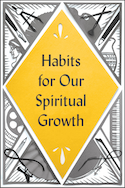What Are the Different Genres of Psalms?

The book of Psalms is Hebrew poetry. However, Hebrew poetry is not recognized by rhyming patterns as in English language poetry. Instead, several other characteristics typify this poetry:
1. Poetic Language
The beauty and power of the psalms are evident in their rich concise word choice, poetic language, and powerful word pictures—as seen in these examples: “the wicked are . . . like chaff ” (1:4); “you have shattered the teeth of the wicked” (3:7); “the Lord is my shepherd” (23:1); “as the deer pants for the water brooks, so my soul pants for You, O God” (42:1); “as the mountains surround Jerusalem, so the Lord surrounds His people” (125:2); and “He gives snow like wool; He scatters the frost like ashes” (147:16).
2. Inclusio
This literary device serves as “book ending” or “bracketing” of ideas with identical or parallel phrases to create a poetic unit of thought. For example, “how blessed is the man…”(Ps1:1)/“how blessed are all…”(Ps 2:12) and “hope in God, for I shall again praise Him for the help of His presence” / “Hope in God, for I shall yet praise Him, the help of my countenance and my God” (42:5, 11).
3. Parallelism
Another important feature of Psalms (and of all biblical Hebrew poetry) is parallelism, one idea presented in relation to another through parallel thoughts. Generally, parallelism is of three types:
(a) synonymous parallelism, in which consecutive lines (each of which is usually a half-verse) present the same or similar idea in different words—
He raises the poor from the dust,
And he lifts the needy from the ash heap.
(Ps 113:7)
(b) antithetical parallelism, in which consecutive lines present contrasting or opposite ideas, usually revolving around a shared point of contact—
The Lord keeps all who love Him, But all the wicked He will destroy.
(Ps 145:20)
(c) synthetic parallelism, in which consecutive lines present different, yet complementary ideas, which together provide a fuller and more specific idea than either line alone—
He trains my hands for battle,
So that my arms can bend a bow of bronze.
(Ps 18:34)
4. Acrostic Structure
In an acrostic, each verse in the psalm begins with a consecutive letter of the Hebrew alphabet (e.g., Pss 9–10 together are an acrostic poem; so are Pss 25; 34; 37; 111–112; and 145). Psalm 119, the longest psalm, is an acrostic praise to the Lord and His Word. It has 22 stanzas of eight verses; each stanza begins with the same letter. Acrostic structure is a helpful memory device, and reflects God’s truth from A to Z.
5. Musical Instruction
The psalms were written to be sung, and 30 psalms are identified as “songs” (e.g., Pss 45, 48, 92). The musical connotation mizmor, often translated “psalm” in the heading, occurs 57 times and only in the headings of psalms. It probably indicates a psalm that was sung by the Levites in the temple to the accompaniment of musical instruments (e.g., Pss 3, 48). Fifty-five of the psalms include musical instructions in their heading; e.g., “For the choir director” (Ps 5); “with stringed instruments” (Ps 67); “A Song of Ascents” (Pss 120–134). These songs of ascents are arranged in poetic units to be sung as the worshipers approach the temple in Jerusalem.
The Moody Bible Commentary
by Michael A. Rydelnik and Michael Vanlaningham
Imagine having a team of 30 Moody Bible Institute professors helping you study the Bible. Now you can with this in-depth, user-friendly,...


Free ebook: Habits for Spiritual Growth
Sign up for our weekly email and get a free download
Bible Insights by Email
Sign up for learning delivered to your inbox weekly

Free ebook: Habits for Spiritual Growth
Sign up for our weekly email and get a free download